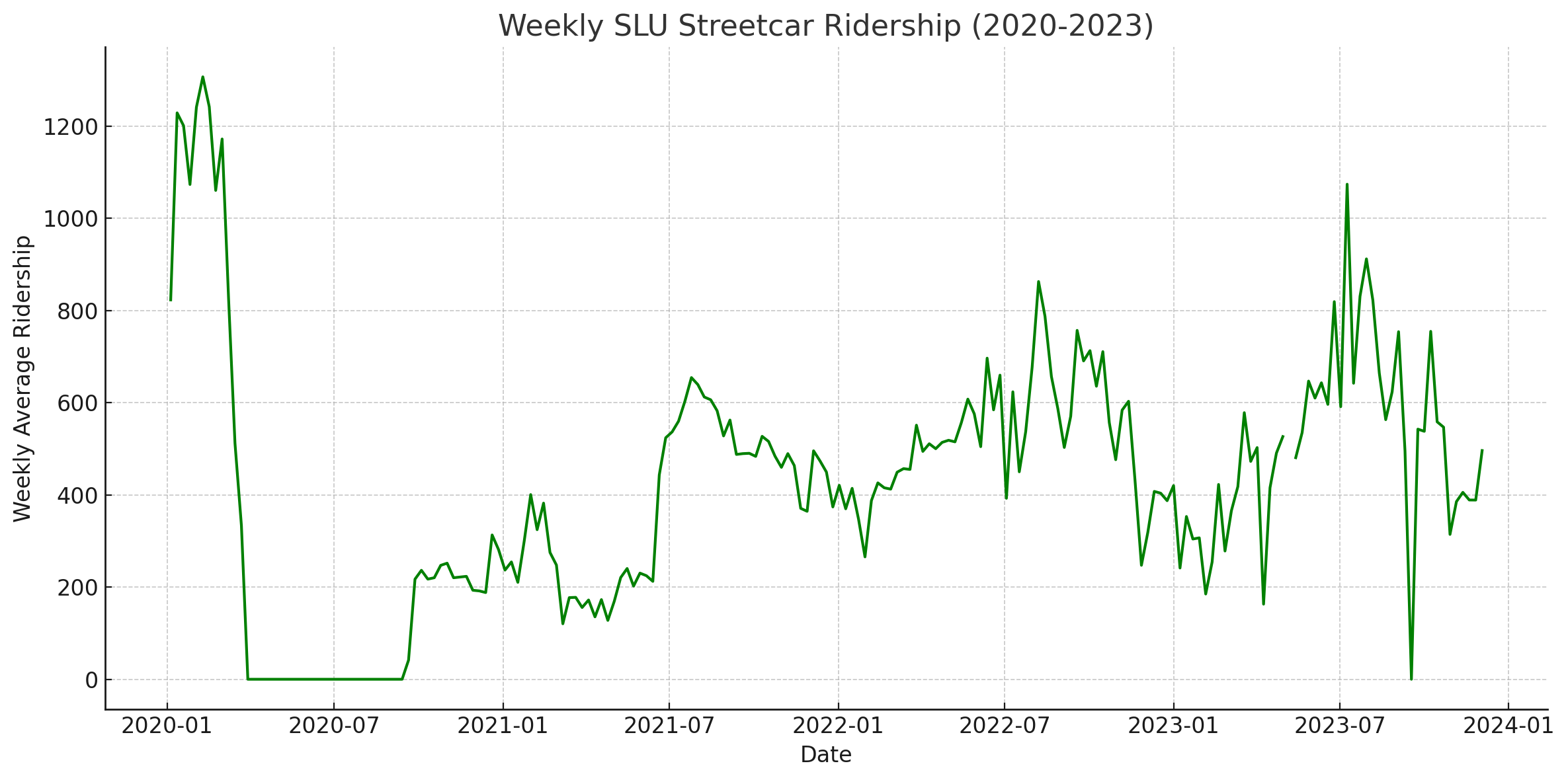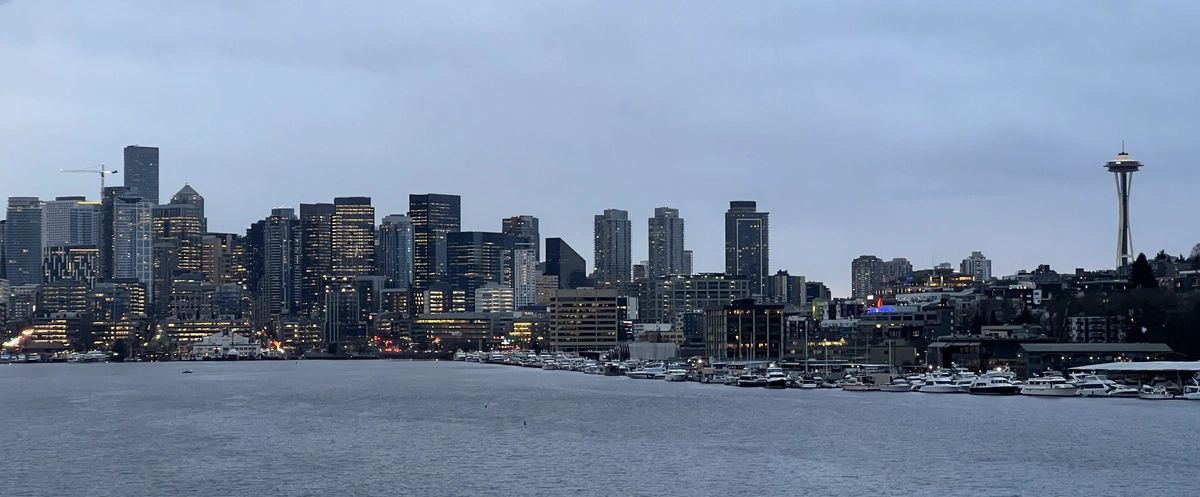I lived in the Eastlake neighborhood of Seattle for several years. Eastlake, by its name, sits on the east side of Lake Union. As a runner, I spent many mornings running along the lake, passing by the South Lake Union Streetcar. Each time I ran past the streetcar, what consistently struck me as odd was that the streetcars were almost always empty. I’d see maybe one or two people riding it. I lived within a couple blocks of the streetcar line for years, and never rode it a single time.

SLU StreetcarWikipedia
Out of curiosity, I filed a Freedom of Information Act request for streetcar ridership data last year. I had all but forgot about the data I received back, but was recently reminded when I read reporting that the SLU streetcar had to close for several weeks due to an electrical issue.
Ridership Data

SLU Streetcar Average Weekly Ridership (2020-2023)
First, I plotted the average weekly ridership for the streetcar for the roughly three years of data the city gave me. The most obvious feature is the dip in ridership in mid-2020. Ridership creeped back up over time. However, even at its peak in the summer of 2023, ridership was still significantly below its pre-pandemic high.
This raises the question: Who is this built for? It’s not clear if the streetcar is supposed to be a tourist transport system (à la Seattle Monorail), or for residents to commute. The day-of-week ridership numbers seem to suggest it is more of a commuter line:

SLU Average Ridership by Week Day (2020-2023)
Even though there’s been a “return to office” push, it doesn’t seem like many people are using the streetcar. There are some big employers nearby, notably Fred Hutch and Amazon. Anecdotally, I’ve heard that Fred Hutch is continuing to let people work from home unless they absolutely have to be in the office. Maybe things will change when Amazon requires people to come in 5 days a week in 2025, but until then, I doubt ridership will match what it was before the pandemic.
The streetcar isn’t cheap to maintain: The Seattle Times reports that it costs $4.6 million per year to operate and maintain. When the streetcar had to close for a couple of weeks in September, I genuinely thought that the city might just close the line indefinitely. But weeks later, service restarted. And, as I watched one of its cars trundle by yesterday at the southern tip of Lake Union, ridership still appeared low.
I largely agree with this sentiment from the Seattle Bike Blog:
The First Hill line seems to be filling an actual transportation need while the SLU line does not.
Keeping the SLU line alive is a classic case of Seattle indecision. It’s connected to the city’s years of indecision about the downtown streetcar project, which remains stalled due to a $93 million budget gap. Worse, indecision like this can be very damaging to a community because streetcar supporters have reason to keep fighting for it so long as it seems that there’s still a chance. I don’t blame them because the vision of a European-style network of streetcars is genuinely appealing and seems like a vision worth fighting for. But even if the city built the downtown streetcar, there are no plans whatsoever to expand the network any further. We’d still just have one oddly-shaped line for the foreseeable future.
…
The streetcar needs to go big or go home, and Seattle has firmly decided not to go big.
Cover image: Lake Union & Seattle Skyline as viewed from Gas Works Park
